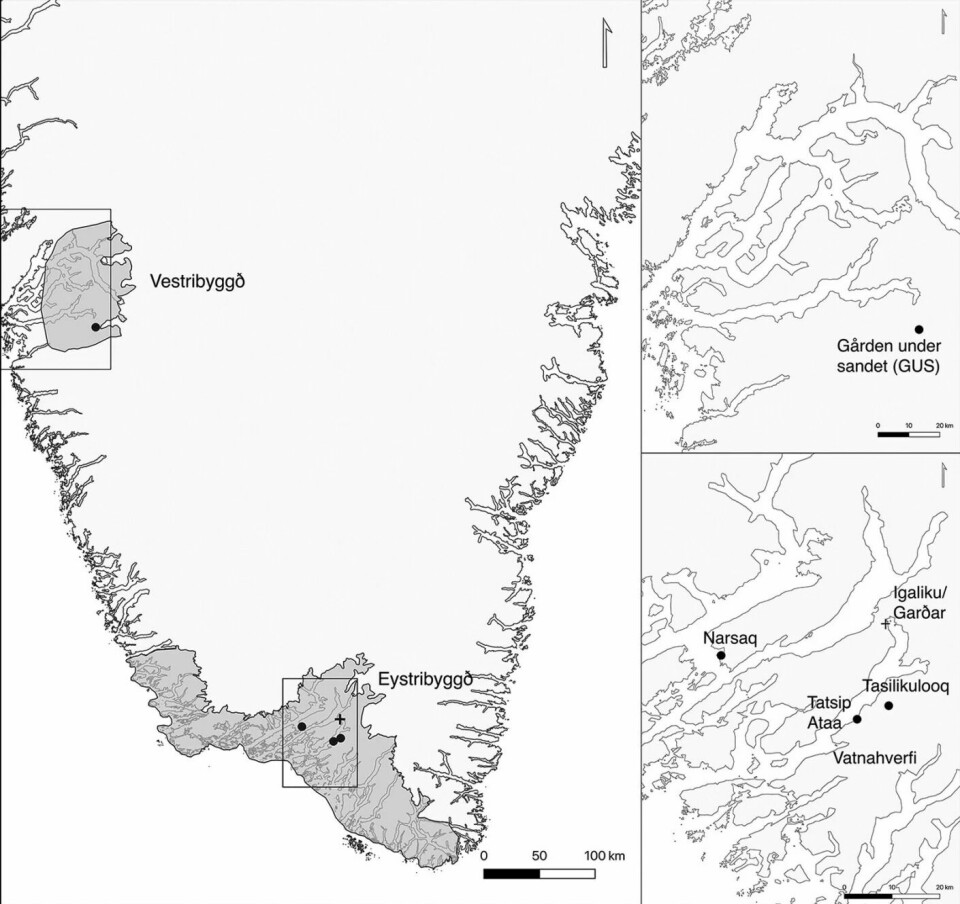
The Vikings in Greenland imported timber from North America, according to a researcher
What kind of timber did the settlers in Greenland use, and where did the different types of wood come from?
The first settlers from Scandinavia reached Greenland around 985 AD, as described in the Saga of Erik the Red, among other sources. Right up until the 15th century, there were settlements in several places in Greenland, both on the east and west coasts.
Descriptions of life in Greenland portray rather inhospitable conditions.
According to the Norwegian text Kongespeilet (King’s mirror) from the 13th century, all iron and timber for building houses had to be imported to Greenland, as shown in a new study in the journal Antiquity.
But how true is this? Icelandic researcher and archaeologist Lísabet Guðmundsdóttir at the University of Reykjavik has examined wood samples from a handful of well-known settlements in Greenland.
These include sites such as Gården under Sandet (the farm beneath the sand) – a medieval farm located in the Western Settlement, one of the two Norse colonies in Greenland. The other colony is called the Eastern Settlement.
Here, the researcher has examined timber remains from large farms such as Igaliku and several other places. The results are presented in an article in Antiquity, where it is confirmed that timber was imported from Norway, Northern Europe, and North America.
Driftwood?
Trees grow in Greenland, and they are mainly varieties of rowan, birch, and juniper. Due to the geographic location and local conditions, these trees tend to be short and twisted, according to the research article.
These trees were used for firewood and other simpler projects, but different types were needed for building houses and boats.
Much of the timber used for houses and boats in Greenland is probably driftwood – that is, wood that has naturally traveled with ocean currents and ended up in Greenland.

Most of the driftwood is probably larch and pine, according to the researchers.
However, the researchers also found remains of types of wood that they believe are not driftwood. These include tree species that can only be found in North America, such as Jack pine and large conifers called hemlock.
These are most likely imported from North America, according to the researchers.
Several other varieties of pine, such as those common in Norway, may have been imported from the Nordic countries. The same applies to oak, which may originate from Europe or North America.
Remnants of the American tree species were found on farms classified as high status, so imported timber may have been reserved for the elites.

Written in sagas
The Icelandic researcher refers to several places in sagas where it is mentioned that the colonies imported timber from North America.
So far, researchers only know of one Norse colony in North America: L'anse aux Meadow in Newfoundland. This Viking settlement was founded around 1000 AD.
There are several possible other colonies mentioned in, among other things, the Saga of the Greenlanders. Some colonies may have had better access to timber than others, but only one Norse settlement has been found so far. It was found by Anne Stine and Helge Ingstad in the 1960s.
Overall, the Icelandic researcher believes that only a very small part of the timber must have been imported, but a large part of the timber may have been either driftwood or imported.
Presumably, driftwood was a very important resource in Greenland. Of all the timber and wood remains examined in this project, approximately 36 per cent were local species. The rest was either driftwood or imported.
The researcher refers to sagas that say that the journeys to North America were made to obtain resources, and that timber was one of the things that was brought back to Greenland.
The main exports from Greenland were walrus bones and narwhal tusks.
Around 1450, the Norse settlements disappeared from Greenland, but it is unclear why this happened. According to the Great Norwegian Encyclopedia, a harsher climate, famine, and conflicts with the indigenous people may have contributed.
———
Translated by Alette Bjordal Gjellesvik.
Read the Norwegian version of this article on forskning.no
Reference:
Guðmundsdóttir, L. Timber imports to Norse Greenland: Lifeline or luxury? Antiquity, vol. 97, 2023. DOI: 10.15184/aqy.2023.13 Abstract.
































